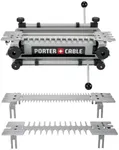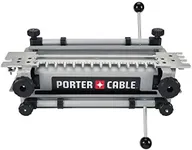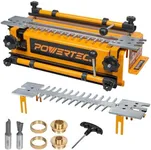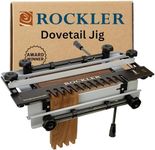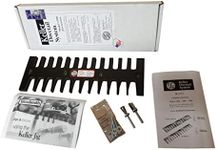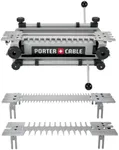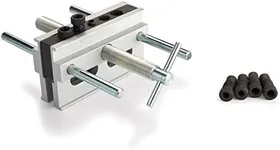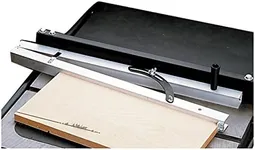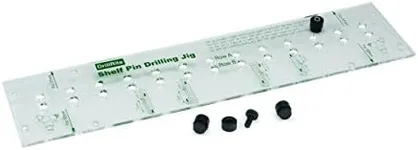Buying Guide for the Best Dovetail Jigs
Choosing the right dovetail jig can make a significant difference in the quality and ease of your woodworking projects. A dovetail jig is a tool used to create precise dovetail joints, which are commonly used in drawer construction and other woodworking projects requiring strong, interlocking joints. When selecting a dovetail jig, it's important to consider several key specifications to ensure you get the best fit for your needs. Understanding these specifications will help you make an informed decision and achieve professional results in your woodworking projects.Template TypesThe template type determines the kind of dovetail joints you can create. There are fixed templates and adjustable templates. Fixed templates are easier to use and are ideal for beginners, as they come with preset spacing for the pins and tails. Adjustable templates offer more flexibility and allow for custom spacing, which is great for more advanced users who want to create unique designs. Choose a fixed template if you are new to woodworking or need a straightforward solution, and opt for an adjustable template if you have more experience and want to experiment with different joint patterns.
Material and Build QualityThe material and build quality of a dovetail jig affect its durability and precision. Jigs made from high-quality materials like aluminum or steel are more durable and provide better accuracy compared to those made from plastic. A sturdy build ensures that the jig will last longer and maintain its precision over time. If you plan to use the jig frequently or for heavy-duty projects, investing in a high-quality, durable jig is essential. For occasional use or lighter projects, a less expensive option may suffice.
Clamping SystemThe clamping system holds the workpiece in place while you cut the dovetail joints. A good clamping system is crucial for ensuring accuracy and safety. There are different types of clamping systems, including manual clamps and quick-release clamps. Manual clamps offer more control and are generally more secure, while quick-release clamps are faster and more convenient to use. If precision is your top priority, go for a jig with a reliable manual clamping system. If you value speed and ease of use, a quick-release clamping system might be more suitable.
Compatibility with RouterNot all dovetail jigs are compatible with every router. It's important to check whether the jig you are considering is compatible with your router model. Some jigs come with universal bases that fit most routers, while others may require specific adapters. Ensuring compatibility will save you time and frustration. If you already own a router, look for a jig that is compatible with it. If you are purchasing both a router and a jig, consider buying them from the same manufacturer to ensure compatibility.
Ease of UseEase of use is an important factor, especially if you are new to using dovetail jigs. Some jigs come with detailed instructions and are designed to be user-friendly, while others may have a steeper learning curve. Features like clear markings, easy adjustments, and comprehensive guides can make a jig easier to use. If you are a beginner, look for a jig that is known for its user-friendly design and comes with good instructional materials. Experienced woodworkers might prefer a more advanced jig with additional features, even if it requires more setup and practice.
VersatilityVersatility refers to the range of joint types and sizes a dovetail jig can create. Some jigs are designed to make only one type of joint, while others can create multiple types, such as through dovetails, half-blind dovetails, and box joints. A versatile jig can be more cost-effective and useful for a variety of projects. If you plan to work on different types of projects, choose a versatile jig that can handle multiple joint types. If you have a specific type of joint in mind, a specialized jig might be more appropriate.

